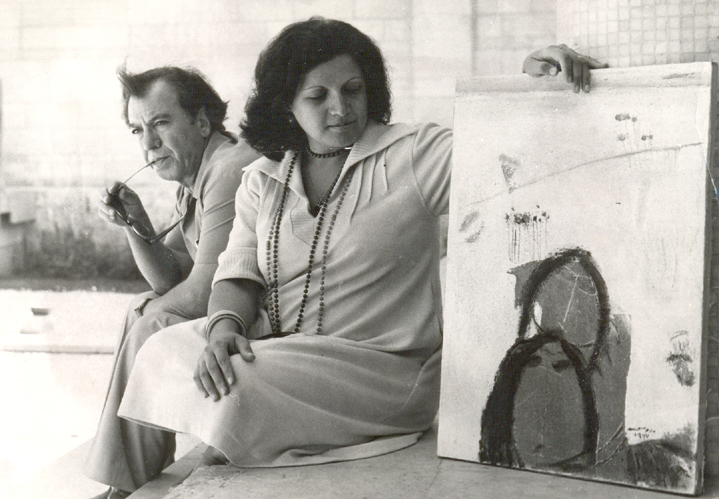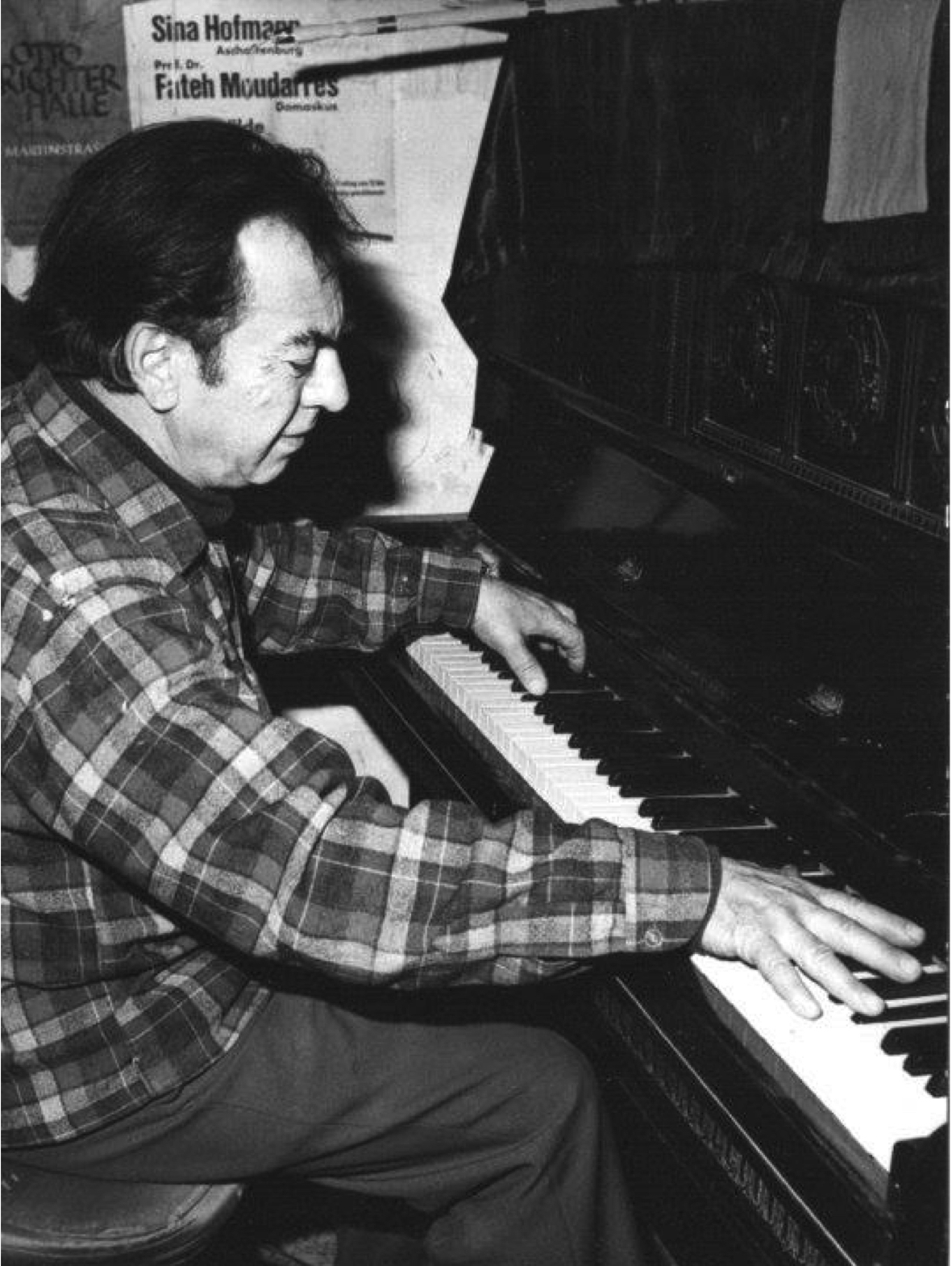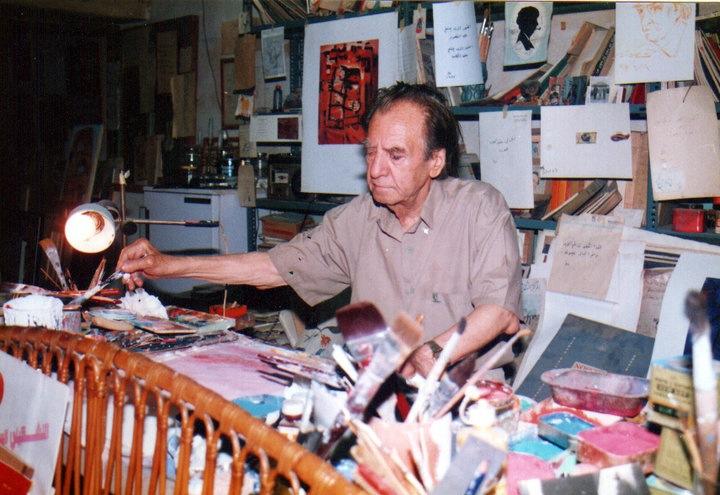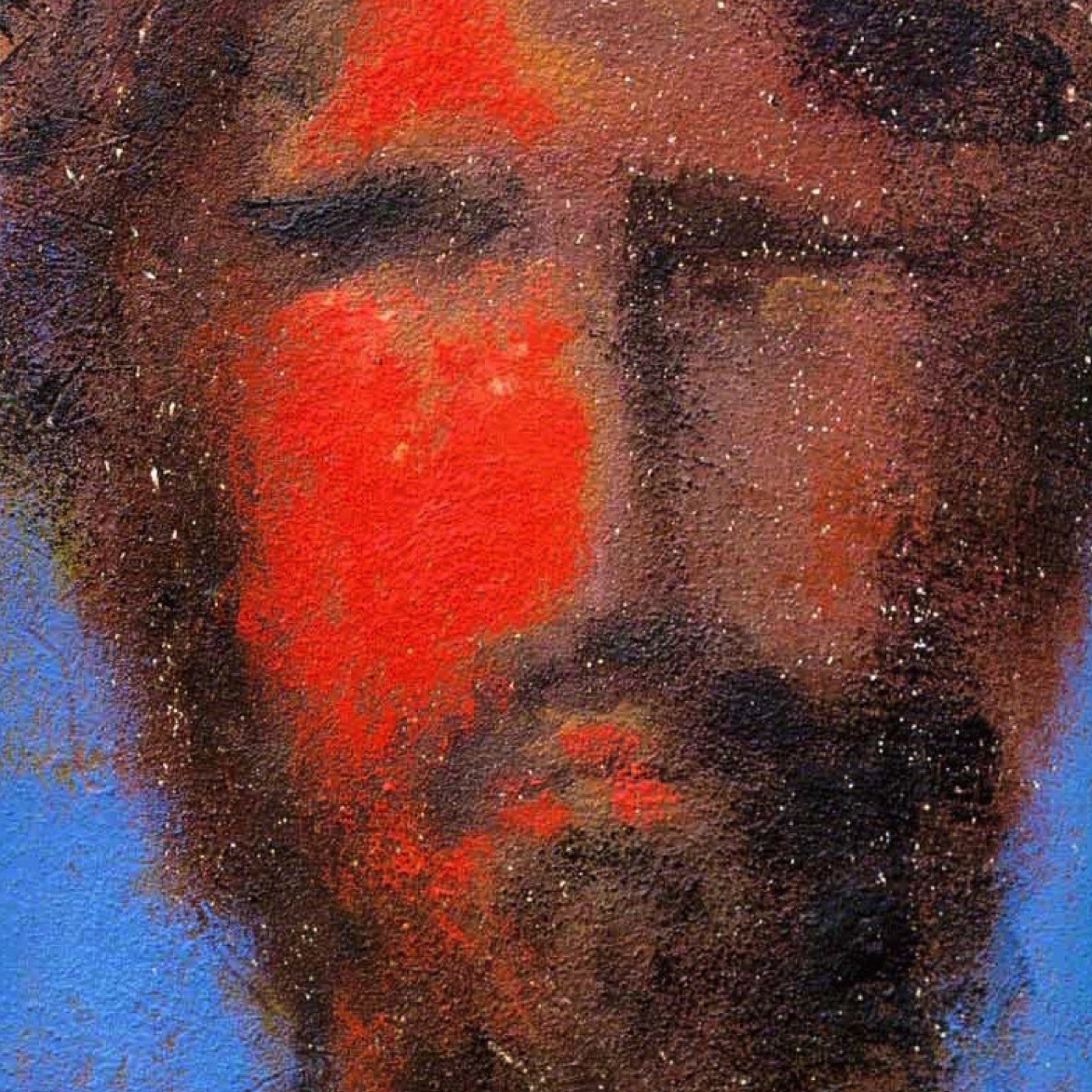Searching for the soul of acclaimed Syrian artist Fateh Moudarres
‘Hello, can you hear me?’ I say, raising my voice a pitch, surmising our connection has been lost after a lengthy pause. I take another sip of tepid, bitter coffee from a stained white mug.
‘… Yes, I can hear you …’ comes the shaky, distorted voice on the other end of the line.
‘OK … how did Fateh Moudarres come into your life?’
Far away from, and yet so close to the horrors of war-ravaged Aleppo and Homs, Shoukran Al Imam lives in a Damascus apartment filled with canvas and love, surrounded by mementos and memories of her late husband. She is not stranded in Syria, as many may imagine, nor does she ask of anyone’s sympathy; this is exactly how Shoukran likes it, and she wouldn’t have it any other way. His daughter, an accomplished artist, lives with her son in distant Portugal, and should she wish, Shoukran could easily join her there and take her myriad belongings with her; but things don’t work that way with her. ‘I can’t imagine myself anywhere else’, she tells me. ‘You cannot uproot a tree and plant it elsewhere – it will die. Call it whatever you want. I cannot live unless I am in Damascus. That is all.’
Whiling away the days in a museum of sorts – for ‘the government does not like the idea of having museums for artists’ – not a single one passes by that Shoukran does not remember her late husband, the renowned Syrian painter Fateh Moudarres. To smooth-talking auctioneers, hotshot bidders, and shameless counterfeiters in the world of contemporary Middle Eastern art, the name ‘Moudarres’ is synonymous with dollar signs and the colour green. At recent Christie’s auctions hosted in Dubai, his paintings have raked in amounts in the hundreds of thousands, and the man – who passed away in 1999 – is regarded as one of the forerunners of the modern art movement in Syria. Fateh’s legacy as an artist has received considerable attention, as has, albeit to a lesser degree, highlights in the story of his life, namely, his education in Rome, penchant for the countryside, differences with the Assad government, tenure at the University of Damascus, and so on. What is often overlooked in such narratives, however, is the little-known love story between him – a member of Syria’s intellectual elite – and a soft-spoken, 24-year old student 30 years his junior from a conservative family named Shoukran, with whom he spent his latter part of his life.

Fateh Moudarres with his wife, Shoukran Al Imam
‘What attracted me to him was his heart’, she tells me resolutely. ‘I was 24 years old, in the last year of my studies. I met him in a café.’ The two, as is said in Persian, gave each other not one, but a hundred hearts, and shortly afterwards, Fateh decided to propose to the young student. ‘He asked my mother,’ Shoukran says, ‘and of course, my family refused him completely … he was 30 years older than me, had a family, and was divorced.’ In addition, Shoukran mentions that her family ‘didn’t like mingling with artists or writers’, for their own reasons, and thought she ‘would stay forever with them’. That didn’t stop the two from going about their business, though; they went to court, signed away, and soon, Shoukran found herself with Fateh, his son and daughter, his old Kurdish mother, and barely any time to herself. ‘Everything I had dreamed of – to be among artists, to write – I had no time for, because of Fateh.’ And, for better or worse, Fateh’s romanticism was reserved first and foremost for his art. ‘There was no romantic side, except in his paintings, his stories, his [interviews] with magazines.’ Perhaps it was because of the age difference, one might conjecture; for, according to Shoukran, Fateh was not only a husband, but a father figure as well. ‘I feel I had one father – a biological one – and a real, adopted father, who was Fateh.’ Furthermore, at the time, Fateh had already become an established artist, teaching at the University of Damascus despite the numerous offers he received to practice abroad, whether in Europe, North America, or Australia. ‘First and foremost, he was a son of his country.’
Whether or not he was painting, Fateh was always up to something. ‘Time could not follow him! He wished there were a hundred hours in a day’, Shoukran recalls, her voice brightening up. Aside from his artistic pursuits, Shoukran often found Fateh reading, writing, playing the piano, and watching boxing programmes and science fiction films on television. ‘He was full of energy’, she remembers; and his vivacity, perhaps, was the reason he refused to even think about death. When I ask Shoukran about what Fateh most wanted, more than anything else, to be remembered for, she explains that ‘he didn’t believe in death, until the last minute. He didn’t care about leaving anything behind, because he was alive.’ There comes another pause as she recollects her thoughts. ‘He didn’t want to work until the end of his life; he wanted to work until the end of life itself.’

Renaissance man: on the piano
Although religious iconography and references dominated his works in the early 60s, his time as a student at the Accademia di Belli Arti in Rome inspired in the young artist an interest in surrealism. From then on, he began to develop what may be called his ‘signature’ style, producing paintings laden with heroes of Syria’s past, works with strong political overtones, as well as ones dealing with the plight of women and villagers, with whom he was able to identify on account of having lived in the countryside before relocating to the sprawling city of Damascus, not unlike Mohamad Malas’ protagonist in the 1983 film Dreams of the City. ‘Fateh’s paintings look primitive, like [those of a] child’, Shoukran explains, when I enquire about some of the forgeries of his work that have been produced and sold in recent years. ‘They think it’s easy to imitate Fateh – no. It took him 50 years to be able to paint like a child. It’s not easy; no one can imitate him.’ Why, then, even try? ‘In our country, they don’t believe that art is something serious’, she says. ‘It’s all about the price of paintings … [and] there is no law to punish counterfeiters … It’s happening everywhere, in Dubai, Lebanon, Jordan …’
He didn’t believe in death, until the last minute. He didn’t care about leaving anything behind, because he was alive … He didn’t want to work until the end of his life; he wanted to work until the end of life itself
Fateh may have painted like a child, but he was anything but an innocent one. As Shoukran says, Fateh’s works – much like those of the Iranian artist Parviz Tanavoli, about whom I wrote some weeks ago – tell the story of his country. ‘He thought that history repeats itself in our country’, she notes. ‘His paintings come as if from a dream; there is a continuous stream from the past to the present [in them].’ She continues, adding that ‘our country is made of all these people, whether they be above the ground, or beneath it.’ But what does it mean to be Syrian, to be a ‘son of one’s country’, as Shoukran puts it? When I asked the once-Aleppo-based artist Khaled Akil about his Syrian identity, he pointed to his country’s pre-Islamic past, about being Syrian – as opposed to Arab – and the grandeur of a rich civilisation now subject to death, destruction, and despair. ‘He refused to settle anywhere else’, says Shoukran, adamantly. ‘I believe if he were alive now, he would stay here. Maybe he was old fashioned; he couldn’t look at the world as one country.’

And why would he stay in Damascus, just as Shoukran does today? ‘For every person, the place [in which] they are born enters into their blood. The people around them – everything – is a part of their being.’ Rania, Shoukran’s daughter, is of the opinion that her mother is ‘losing the ability to live’, although Shoukran believes otherwise. ‘I have been dreaming that my life will come, one day, and I am not believing it anymore. My life is behind me, not in front of me’, she says, somewhat dolefully, adding that ‘Because I am dreaming all my life, I [find] I am staying in a dream, and can’t get out of it. I cannot get used to another kind of life.’ She mentions my Iranian origin, and we find common ground when I tell her about not ever having felt at home in Canada, the UK, or anyplace else, including my native Iran. I then reflect for a moment that I may be one of those uprooted trees she was telling me about earlier – and think to myself how right she is – though there’s life in me yet. I also at the same time remember my paternal grandparents, who, despite having had the opportunity to live with my parents in Canada, chose to return to Tehran. I always asked my grandmother why she would never join us again, and the response was always the same: ‘This is my country’, she would say with a smile, as her golden farvahar necklace shimmered and a fading lion and sun gazed down on us from above her bookshelf.
After recollections of memories, moments of silence and laughter, and anecdotes about the life of an extraordinary man, I end our conversation by asking Shoukran if there are any works in particular of Fateh’s she most admires. The response is unlike any I’ve ever heard – and I’ve heard quite a few. ‘I consider Fateh’s work to be a continuous one that completed itself throughout his life’, she explains. ‘He would tell me, “Now, I am getting a bit nearer to the secret of my paintings!” Fateh’s art told – and continues to tell – not only the story of his beloved Syria, but also his life. To behold a Moudarres is to gaze into the soul of a humble son of his country who only wanted ‘his painting to be pure, as if to say what was in his mind, his heart. He was very pure, very naïve. Like a child who is telling the truth.‘
Cover photo by Ziad al Madani.

